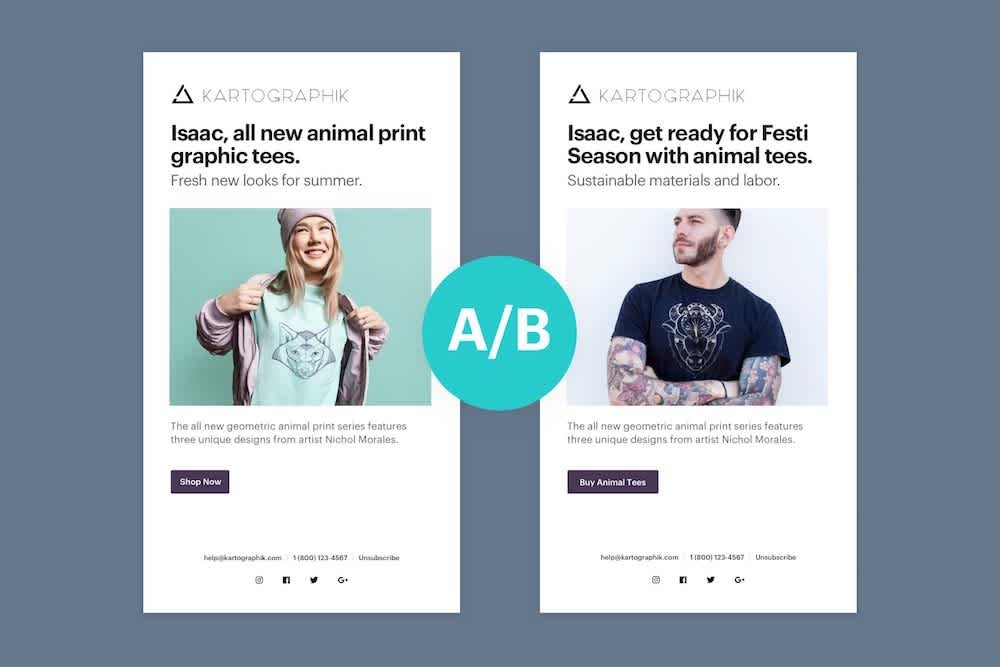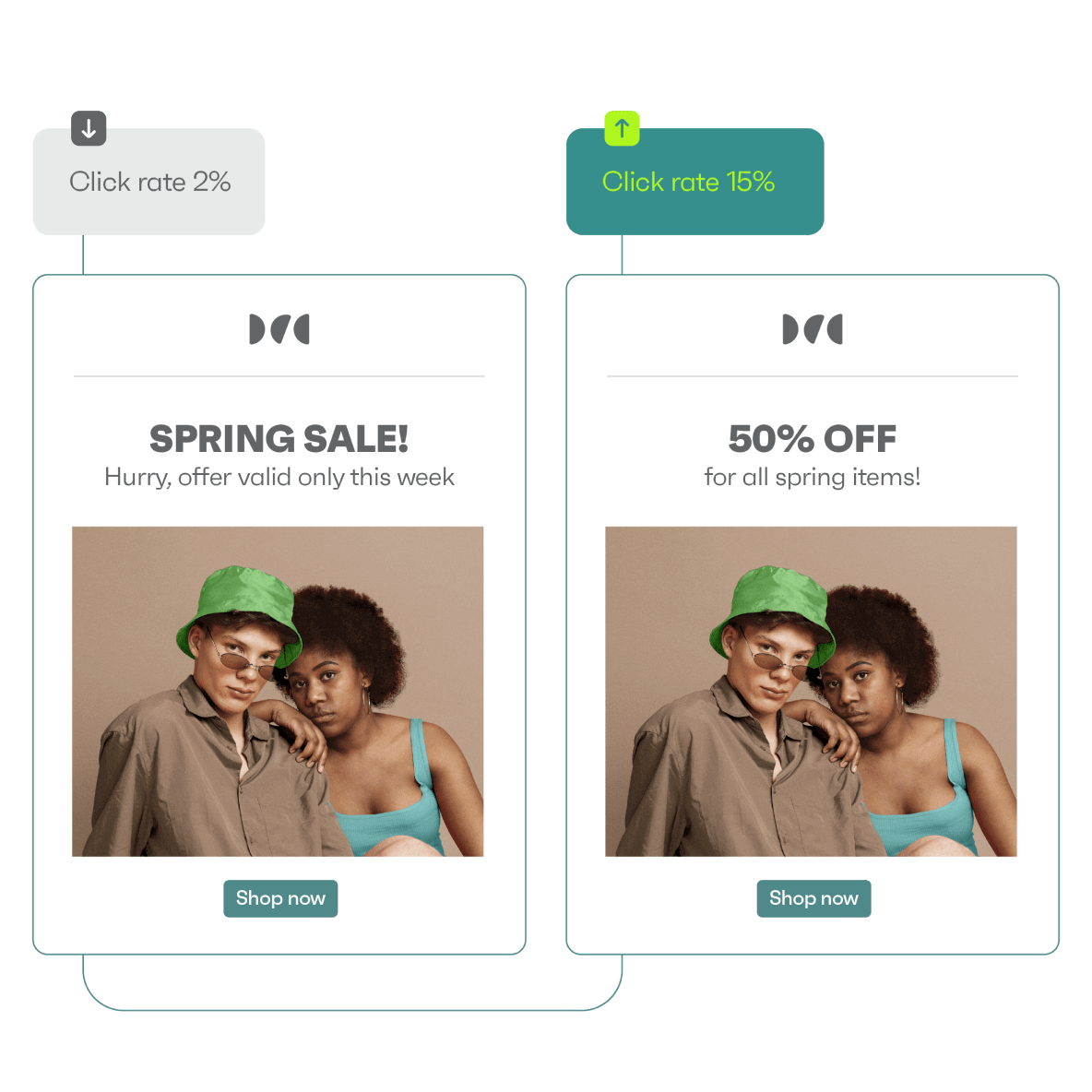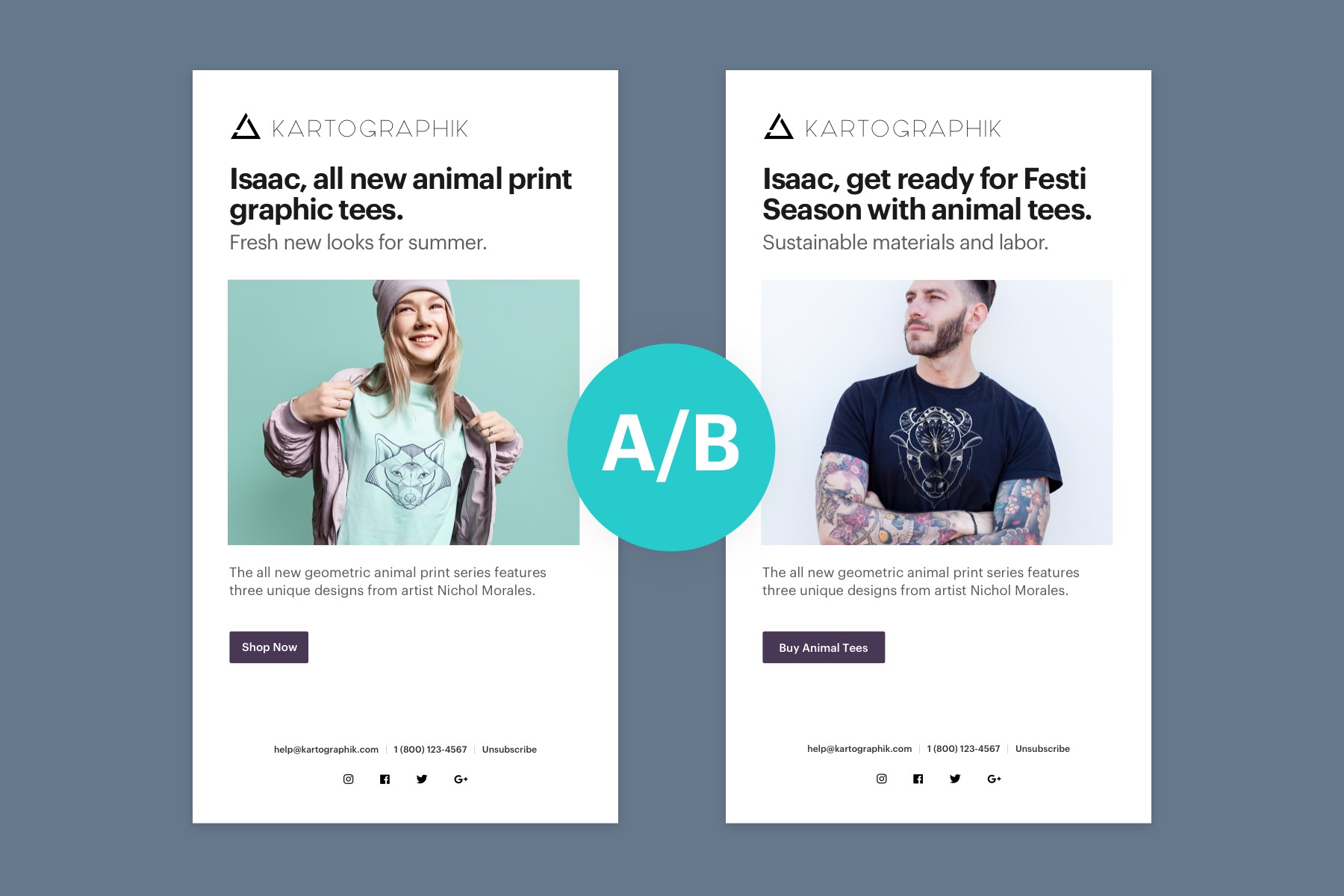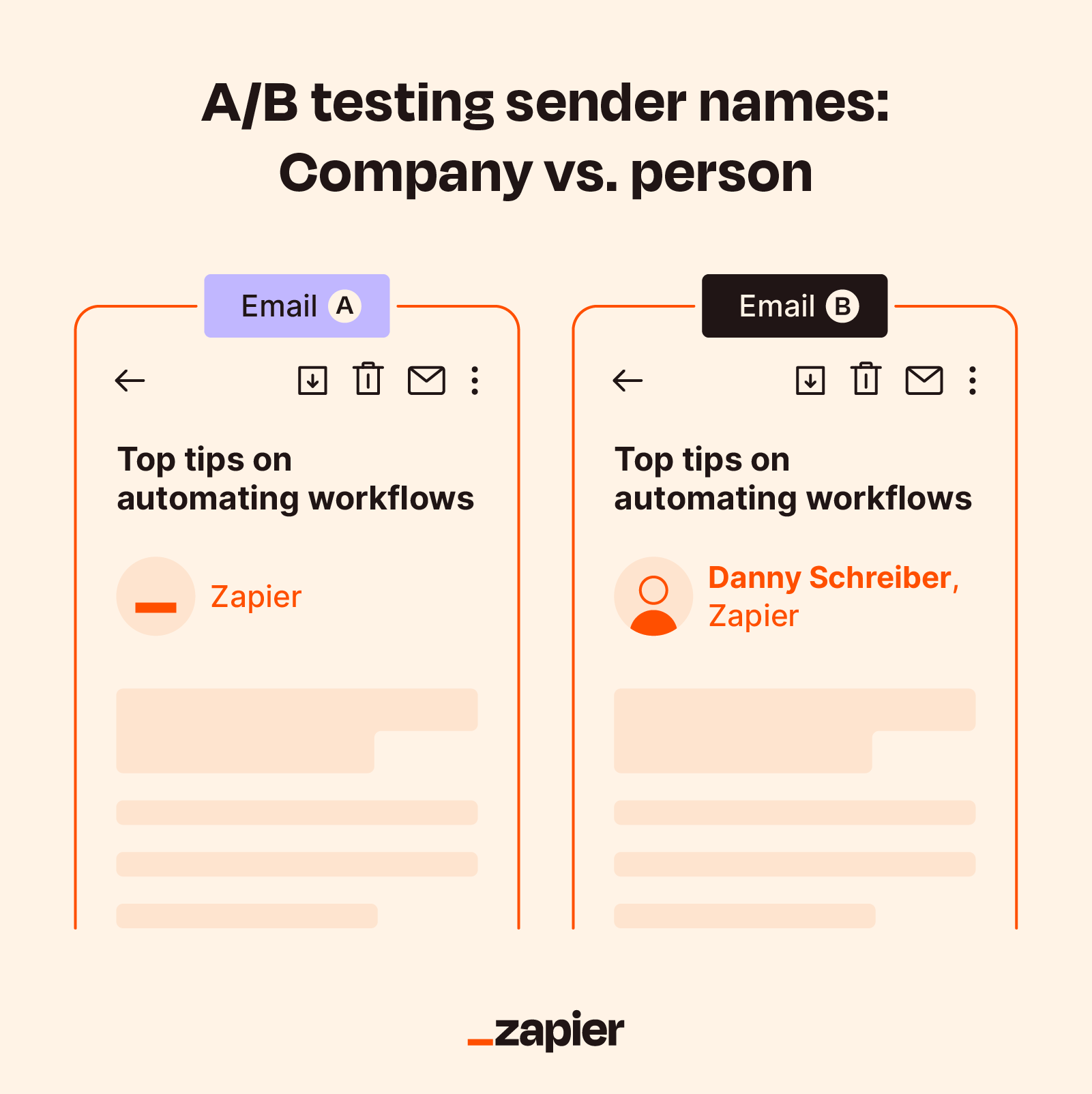Don't miss our holiday offer - up to 50% OFF!

A B Testing In Email Marketing: Boost Your Campaign Success
A/B testing in email marketing is a powerful tool. It helps businesses optimize their campaigns for better results.
In the world of digital marketing, sending effective emails can make a huge difference. A/B testing, also known as split testing, allows marketers to compare two versions of an email to see which performs better. This method involves changing one element at a time, such as the subject line, call-to-action, or images. By analyzing the results, businesses can understand what resonates with their audience. This leads to higher engagement and better conversion rates. Whether you’re new to email marketing or looking to improve your strategies, A/B testing is a crucial step. It helps you make data-driven decisions to enhance your email campaigns and achieve your marketing goals. For an efficient A/B testing tool, consider using Sender. This platform combines email and SMS marketing, offers robust automation, and provides detailed analytics to improve your campaigns.

Credit: www.omnisend.com
Introduction To A/b Testing In Email Marketing
Email marketing is a powerful tool for businesses. To maximize its effectiveness, one must understand A/B testing. This method lets you compare two versions of an email to see which performs better. By using A/B testing, you can optimize your email campaigns and achieve better results.
What Is A/b Testing?
A/B testing, also known as split testing, involves sending two different versions of an email to a small segment of your audience. Version A goes to one group, and version B to another. The goal is to determine which version leads to better engagement, such as higher open rates or click-through rates.
For example, you might test different subject lines, email designs, call-to-action buttons, or content layout. The version that performs better can then be sent to the rest of your audience.
Importance Of A/b Testing In Email Campaigns
A/B testing is crucial for several reasons:
- Improved Engagement: By testing different elements, you can identify what resonates with your audience, leading to higher engagement.
- Increased Conversions: Optimizing email content through A/B testing can drive more conversions and sales.
- Data-Driven Decisions: A/B testing provides concrete data that helps you make informed decisions about your email marketing strategy.
- Reduced Unsubscribes: By understanding what your audience prefers, you can create content that keeps them engaged and reduces the likelihood of unsubscribes.
Using a platform like Sender can simplify this process. Sender is an omnichannel marketing platform that combines email and SMS marketing. It offers robust automation and segmentation features, making it easier to conduct A/B tests and optimize your campaigns.
Here are some features of Sender:
| Feature | Description |
|---|---|
| Email and SMS Marketing | Combines email and SMS to drive outstanding results. |
| Marketing Automation | Effortlessly set up automated campaigns. |
| Audience Segmentation | Tailor messages to segmented lists for higher engagement. |
| Advanced Analytics | Track campaign performance with detailed reports. |
| Seamless Integration | Connects easily with popular platforms like WordPress, Shopify, and more. |
With A/B testing, you can refine your email marketing efforts. Platforms like Sender offer tools to help you execute effective tests, save time, and increase engagement. By leveraging these features, businesses can achieve better results and grow their sales.
Key Features Of A/b Testing
A/B testing, also known as split testing, is crucial in email marketing. It allows marketers to test different versions of an email to see which performs better. This method helps in making data-driven decisions to enhance campaign effectiveness.
Creating Hypotheses And Variations
Start by creating a hypothesis. This is a prediction of what you think will happen. For example, “Adding a discount code in the subject line will increase open rates.” Once you have a hypothesis, create variations of your email to test this prediction. Each version should have only one difference. This could be the subject line, email content, call-to-action, or images.
- Subject Line Variations: Test different subject lines to see which one gets more opens.
- Email Content: Change the email body to see which content engages more.
- Call-to-Action: Experiment with different CTAs to find out what drives more clicks.
- Images: Test different images to see their impact on engagement.
Segmentation Of Email Lists
Segmentation is dividing your email list into smaller groups based on specific criteria. This could be demographics, past purchase behavior, or engagement level. By segmenting your email list, you can tailor your A/B tests to each group, leading to more relevant and effective emails.
| Segment | Criteria |
|---|---|
| New Subscribers | Subscribed in the last 30 days |
| Frequent Buyers | Made a purchase in the past month |
| Inactive Users | No engagement in the past 90 days |
Using Sender’s Audience Segmentation feature, you can easily create targeted segments. This ensures your A/B tests reach the right audience, improving your chances of success.
Running Controlled Experiments
Running controlled experiments involves sending your email variations to different segments of your audience. The goal is to see which version performs better. Use a tool like Sender to automate this process. Sender’s Marketing Automation feature allows you to set up and run these tests effortlessly.
- Set Up Your Test: Decide on the variations and the segment for your test.
- Send Emails: Use Sender to send out the variations to your chosen segments.
- Track Results: Monitor the performance using Advanced Analytics in Sender.
- Analyze Data: Look at open rates, click-through rates, and conversions to determine the winner.
With Sender, you can access detailed reports to help you understand which email performed better and why. This data is invaluable for refining your future email marketing campaigns.
Benefits Of A/b Testing In Email Marketing
A/B testing, also known as split testing, is a critical strategy in email marketing. It allows marketers to compare two versions of an email to see which performs better. By implementing A/B testing, businesses can optimize their email campaigns to achieve better results.
Improved Open Rates
A/B testing can significantly enhance open rates. By testing different subject lines, preview texts, and sender names, you can identify what resonates most with your audience. A higher open rate means your message is reaching more people.
For instance, you can test:
- Different subject lines
- Personalized vs. generic sender names
- Various preview texts
With Sender, you can effortlessly set up these tests to boost your open rates.
Enhanced Click-through Rates
Optimizing click-through rates (CTR) is another benefit of A/B testing. By experimenting with different elements such as email content, call-to-action (CTA) buttons, and images, you can determine what drives more clicks.
Consider testing:
- Different CTAs
- Various email layouts
- Different image placements
Sender’s advanced analytics will help you track and analyze these tests for better engagement.
Optimized Conversion Rates
Ultimately, the goal of email marketing is to convert recipients into customers. A/B testing helps you identify which strategies lead to higher conversion rates. By testing different offers, landing pages, and messaging, you can optimize your campaigns for maximum conversions.
You can test:
- Different promotional offers
- Various landing page designs
- Different email messages
With Sender’s segmentation and automation features, you can tailor your messages to specific audience segments for higher conversions.
Sender offers a comprehensive platform for email and SMS marketing, with features like automation, segmentation, and advanced analytics. This makes it easier for businesses to implement effective A/B testing and enhance their marketing efforts. For more details, visit Sender’s official website.
| Main Features | Benefits |
|---|---|
| Email and SMS Marketing | Combines email and SMS for outstanding results |
| Marketing Automation | Saves time by automating tasks |
| Audience Segmentation | Increases engagement with tailored messages |
| Advanced Analytics | Tracks and analyzes campaign performance |
| Seamless Integration | Connects with popular CMS and eCommerce platforms |
Implementing A/B testing with Sender can lead to improved open rates, enhanced click-through rates, and optimized conversion rates. Start your journey to better email marketing today!

Credit: www.weebly.com
How To Conduct A/b Tests Effectively
Conducting A/B tests in email marketing helps refine strategies and improve results. By experimenting with different variables, you can understand what resonates best with your audience. Follow these steps for effective A/B testing.
Defining Clear Goals
Start by defining clear goals for your A/B tests. This could be increasing open rates, click-through rates, or conversions. Ensure your goals are specific, measurable, and aligned with your overall marketing objectives.
- Increase open rates
- Boost click-through rates
- Enhance conversions
Choosing The Right Variables
Choosing the right variables to test is crucial. Common elements to test include:
| Variable | Description |
|---|---|
| Subject Lines | Test different subject lines to see which one attracts more opens. |
| Call to Action (CTA) | Experiment with different CTAs to determine which drives more clicks. |
| Email Content | Try different content types or lengths to see what engages your audience. |
| Send Times | Test different times of day or days of the week for sending emails. |
Analyzing Test Results
After running your tests, it’s essential to analyze the results effectively. Use the data to gain insights and make informed decisions. Follow these steps:
- Compare the performance metrics of both versions.
- Identify trends and patterns.
- Use advanced analytics tools for in-depth analysis.
- Document your findings and apply them to future campaigns.
Sender provides advanced analytics to help you track and analyze your A/B test results. With its comprehensive features, you can easily optimize your email and SMS marketing campaigns to achieve better outcomes.
Common Pitfalls And How To Avoid Them
Conducting A/B testing in email marketing can boost your campaign performance. But, some common pitfalls can hinder your success. Understanding these pitfalls and how to avoid them is crucial for effective A/B testing.
Testing Too Many Variables At Once
One major pitfall is testing too many variables at once. When you test multiple elements, it becomes hard to determine which change led to the results. To avoid this, focus on one variable at a time.
| Variable | Example |
|---|---|
| Subject Line | Test different subject lines for open rates. |
| Call-to-Action | Test different CTAs for click-through rates. |
| Images | Test the impact of different images on engagement. |
Insufficient Sample Size
Testing with an insufficient sample size is another common pitfall. A small sample size can lead to inaccurate results. Ensure your sample size is large enough to provide reliable data.
- Use a sample size calculator.
- Ensure your list is segmented properly.
- Consider your audience size and engagement rates.
Ignoring Statistical Significance
Ignoring statistical significance can lead to incorrect conclusions. Statistical significance indicates whether your results are due to chance or an actual change. Always check for statistical significance before making decisions.
- Set a confidence level (usually 95%).
- Use statistical tools to analyze your results.
- Make decisions based on significant results only.
By avoiding these common pitfalls, your A/B tests will provide more accurate and actionable insights. This will lead to better email marketing campaigns and increased engagement.
Case Studies: Successful A/b Testing Campaigns
Discover how A/B testing in email marketing can transform your campaigns. We’ll look at real-life examples to see what works and why.
Case Study 1: Subject Line Optimization
Company A aimed to improve open rates for their marketing emails. They tested two different subject lines:
| Version | Subject Line | Open Rate |
|---|---|---|
| A | Exclusive Offer Just for You! | 25% |
| B | Don’t Miss Out on This Deal! | 30% |
Version B resulted in a 5% higher open rate. The phrase “Don’t Miss Out” created urgency and curiosity.
Case Study 2: Call-to-action Improvements
Company B wanted to boost click-through rates for their email campaigns. They tested two different call-to-action (CTA) buttons:
| Version | CTA Text | Click-Through Rate |
|---|---|---|
| A | Learn More | 15% |
| B | Get Started Now | 20% |
Version B led to a 5% higher click-through rate. The action-oriented text “Get Started Now” was more compelling.
These case studies highlight the power of A/B testing in email marketing. Small changes can lead to significant improvements. Always test different elements to see what resonates best with your audience.
Tools And Software For A/b Testing
A/B testing is essential for optimizing email marketing campaigns. The right tools and software can make A/B testing efficient and effective. Here we discuss the top tools in the market and the key features to look for in A/B testing software.
Top A/b Testing Tools In The Market
| Tool | Features | Pricing |
|---|---|---|
| Sender | Email and SMS marketing, marketing automation, audience segmentation, advanced analytics | Free plan available, 40% off on annual plans |
| Mailchimp | Email marketing, automation, segmentation, analytics | Starting at $9.99/month |
| HubSpot | Email marketing, CRM integration, automation, detailed analytics | Free plan available, paid plans start at $50/month |
Features To Look For In A/b Testing Software
- Ease of Use: User-friendly interface for quick setup and management.
- Comprehensive Analytics: Detailed reports to track and measure performance.
- Integration Capability: Compatibility with popular CMS, CRM, and e-commerce platforms.
- Automation: Ability to automate email and SMS campaigns.
- Segmentation: Tools for audience segmentation to send targeted messages.
- Customer Support: Reliable support to assist with any issues.
These features ensure that your A/B testing efforts yield the best possible results.

Credit: zapier.com
Pros And Cons Of A/b Testing
A/B testing is a powerful strategy in email marketing. While it has many benefits, it also presents some challenges. Below, we explore the pros and cons of A/B testing in detail.
Pros: Data-driven Decision Making
A/B testing empowers marketers with data. By comparing two versions of an email, you can see which one performs better. This helps make informed decisions based on actual results rather than guesses. Here are some benefits:
- Improved Campaign Performance: Understand what works best for your audience.
- Higher Engagement Rates: Tailor content to what recipients prefer.
- Increased Conversions: Optimize elements like subject lines and calls-to-action for better results.
Using tools like Sender, you can easily set up A/B tests. This platform offers advanced analytics to track performance, making it easier to understand your audience’s preferences.
Cons: Time And Resource Intensive
While A/B testing provides valuable insights, it can be time-consuming and resource-intensive. Here are some challenges:
- Requires Planning: Setting up tests involves careful planning and execution.
- Data Collection Time: It takes time to gather enough data for meaningful results.
- Resource Allocation: You need dedicated resources to manage and analyze tests.
For small teams, this can be a significant burden. However, platforms like Sender offer automation features to streamline the process. This helps reduce the manual effort involved in running A/B tests.
Despite these challenges, the benefits of A/B testing often outweigh the drawbacks. By understanding both the pros and cons, you can better leverage this strategy to optimize your email marketing campaigns.
Specific Recommendations For Ideal Users
Understanding the unique requirements of different businesses is crucial for successful A/B testing in email marketing. Whether you run a small business or manage a large enterprise, tailored strategies can significantly improve your campaign outcomes.
Best Practices For Small Businesses
Small businesses often have limited resources. Efficient use of A/B testing can help maximize results without overspending. Here are some best practices:
- Start Simple: Test one variable at a time, such as subject lines or call-to-action buttons.
- Use Clear Metrics: Focus on key performance indicators like open rates and click-through rates.
- Segment Your Audience: Utilize Sender’s audience segmentation to tailor messages effectively.
- Automate Testing: Leverage marketing automation to run tests without manual intervention.
- Analyze Results: Use Sender’s advanced analytics to understand which variations perform best.
Small businesses can benefit from Sender’s simple dashboard and seamless integration with platforms like WordPress and WooCommerce. This saves time and ensures smooth operations.
Strategies For Large Enterprises
Large enterprises often manage extensive email lists and complex campaigns. Effective A/B testing strategies can help optimize performance at scale. Consider these strategies:
- Test Multiple Variables: Conduct multivariate testing to examine the impact of multiple elements simultaneously.
- Leverage Advanced Segmentation: Utilize Sender’s robust segmentation features to target specific audience groups.
- Integrate with CRM: Connect Sender with CRM systems to ensure consistent messaging across channels.
- Utilize Detailed Analytics: Analyze comprehensive reports to gain insights into campaign performance.
- Continuous Optimization: Implement a cycle of testing, analyzing, and optimizing to refine email strategies continuously.
For large enterprises, Sender offers premium capabilities and comprehensive support, ensuring that even the most complex campaigns run smoothly.
By applying these recommendations, both small businesses and large enterprises can enhance their email marketing efforts. Using a platform like Sender makes it easier to implement, track, and optimize A/B tests effectively.
Conclusion: Maximizing Campaign Success With A/b Testing
A/B testing is a powerful tool in email marketing. It helps you understand what resonates with your audience. By testing different elements, you can optimize your campaigns for better performance. Let’s dive into the key takeaways and some final thoughts.
Recap Of Key Points
- What is A/B Testing? A method to compare two versions of an email to see which performs better.
- Importance of A/B Testing: Identifies the most effective strategies to engage your audience.
- Elements to Test: Subject lines, email content, images, call-to-action (CTA) buttons, and sending times.
- Metrics to Measure: Open rates, click-through rates, conversion rates, and overall ROI.
- Using Tools: Platforms like Sender offer robust A/B testing features to streamline your efforts.
Final Thoughts And Encouragement To Experiment
A/B testing is essential for any email marketing strategy. It provides insights that can significantly improve your results. Start with simple tests, such as subject lines. Gradually, move to more complex elements like content and visuals.
Using tools like Sender makes the process easier. With features like marketing automation and audience segmentation, you can deliver targeted messages. This leads to higher engagement and conversions. Plus, the advanced analytics help you track performance and make data-driven decisions.
Remember, every audience is different. What works for one may not work for another. Regular testing and analysis are key. Don’t be afraid to experiment. The more you test, the more you learn. This will ultimately lead to better campaign success.
For more information and resources, visit Sender. Happy testing!
Frequently Asked Questions
What Is A/b Testing In Email Marketing?
A/B testing in email marketing involves sending two versions of an email to see which performs better. It helps optimize open rates, click-through rates, and conversions.
How To Conduct A/b Testing In Email Marketing?
Start by creating two versions of your email with one varying element. Send each version to a small, random segment of your audience and analyze the results.
What Elements Can You Test In Email A/b Testing?
You can test subject lines, email content, images, call-to-action buttons, and send times. Experiment with different elements to see what resonates best with your audience.
Why Is A/b Testing Important In Email Campaigns?
A/B testing is important because it helps you understand your audience’s preferences. This leads to higher engagement and better campaign performance over time.
Conclusion
A/B testing in email marketing boosts campaign success. It provides insights into what resonates with your audience. Implementing A/B testing is straightforward and beneficial. Remember to test one variable at a time for accuracy. For robust email and SMS marketing solutions, consider Sender. It offers automation, segmentation, and advanced analytics. These features enhance your marketing efforts and drive sales. Start optimizing your email campaigns today and see the difference.
I don’t unremarkably comment but I gotta admit appreciate it for the post on this perfect one : D.